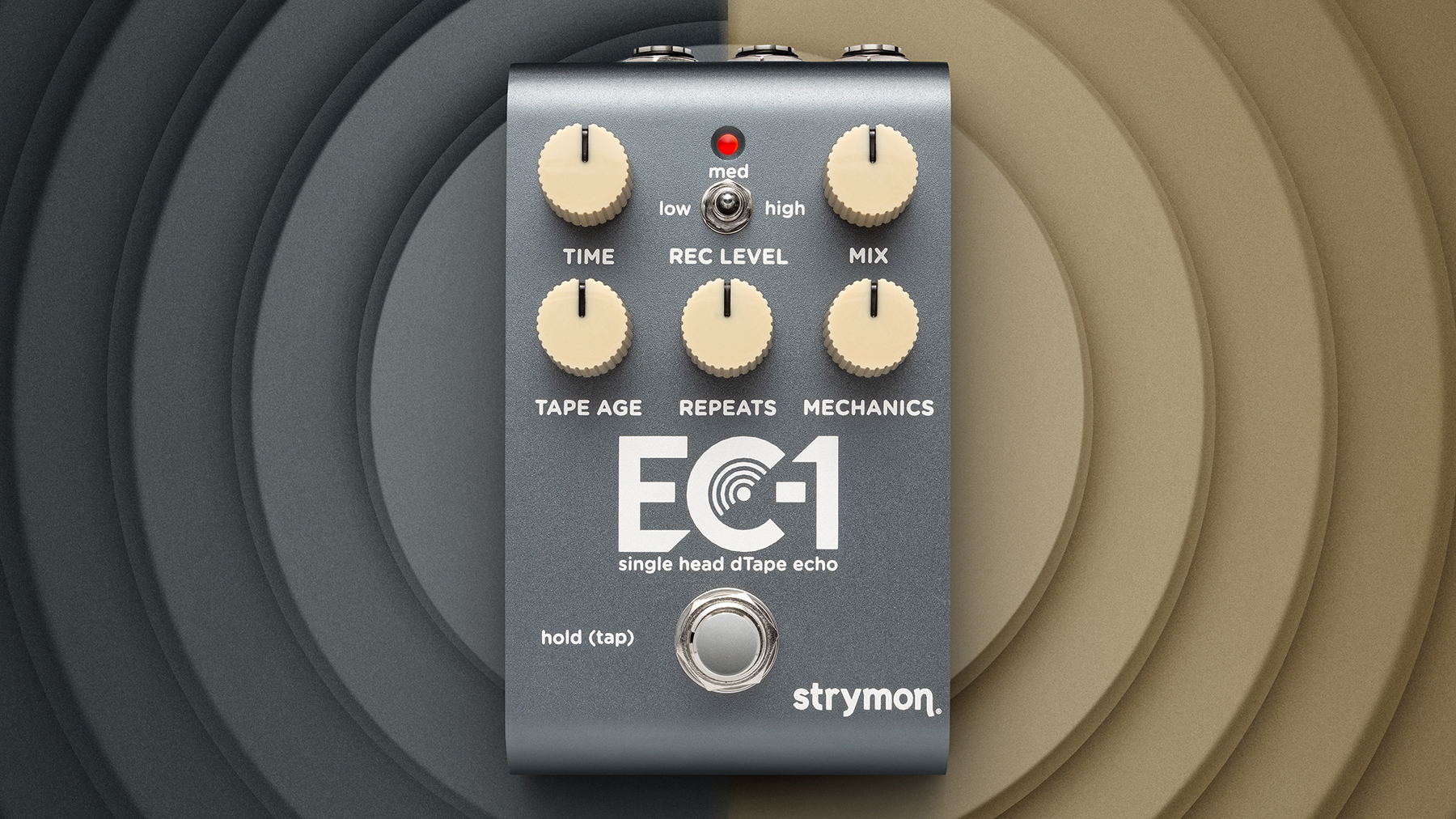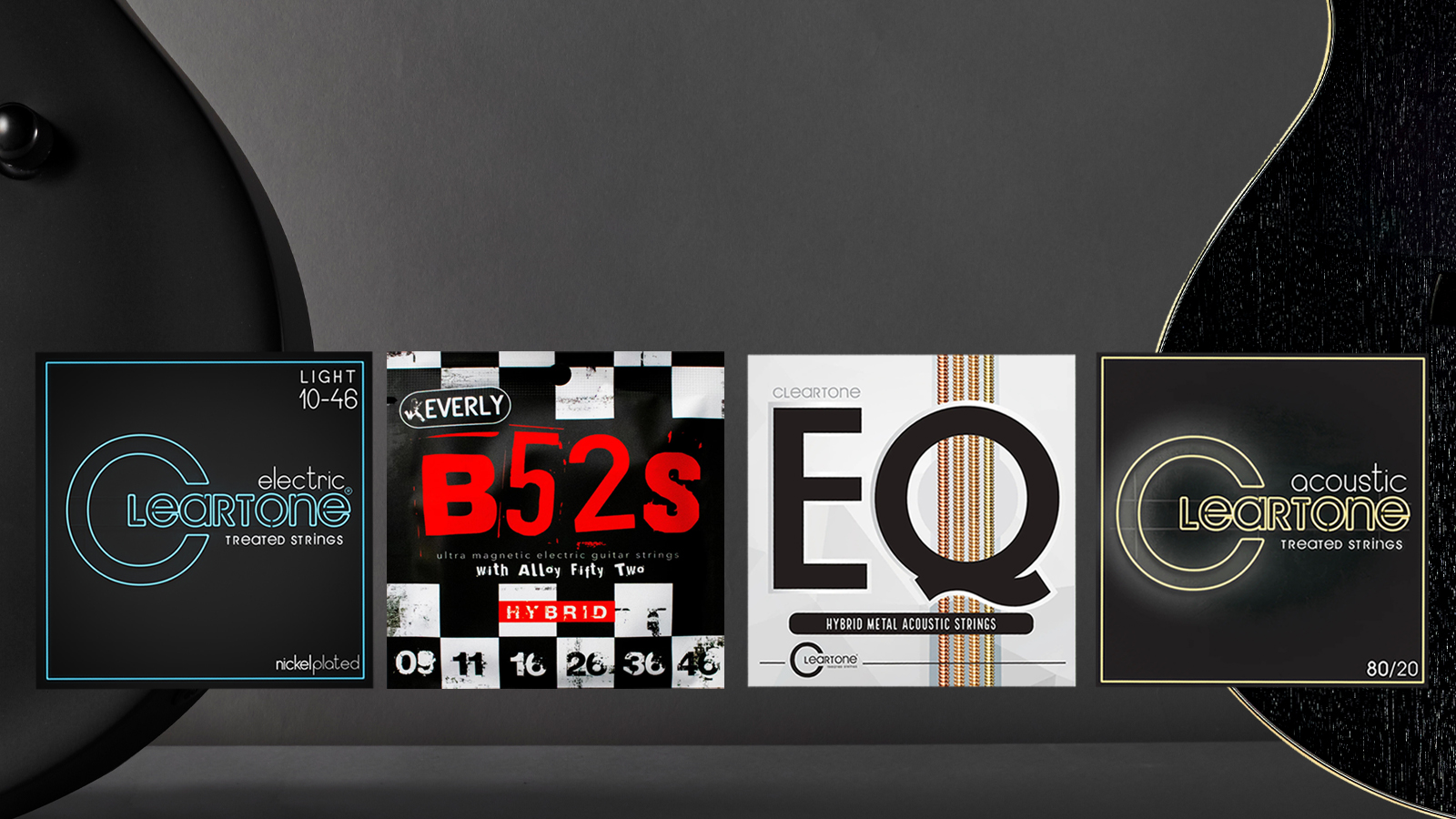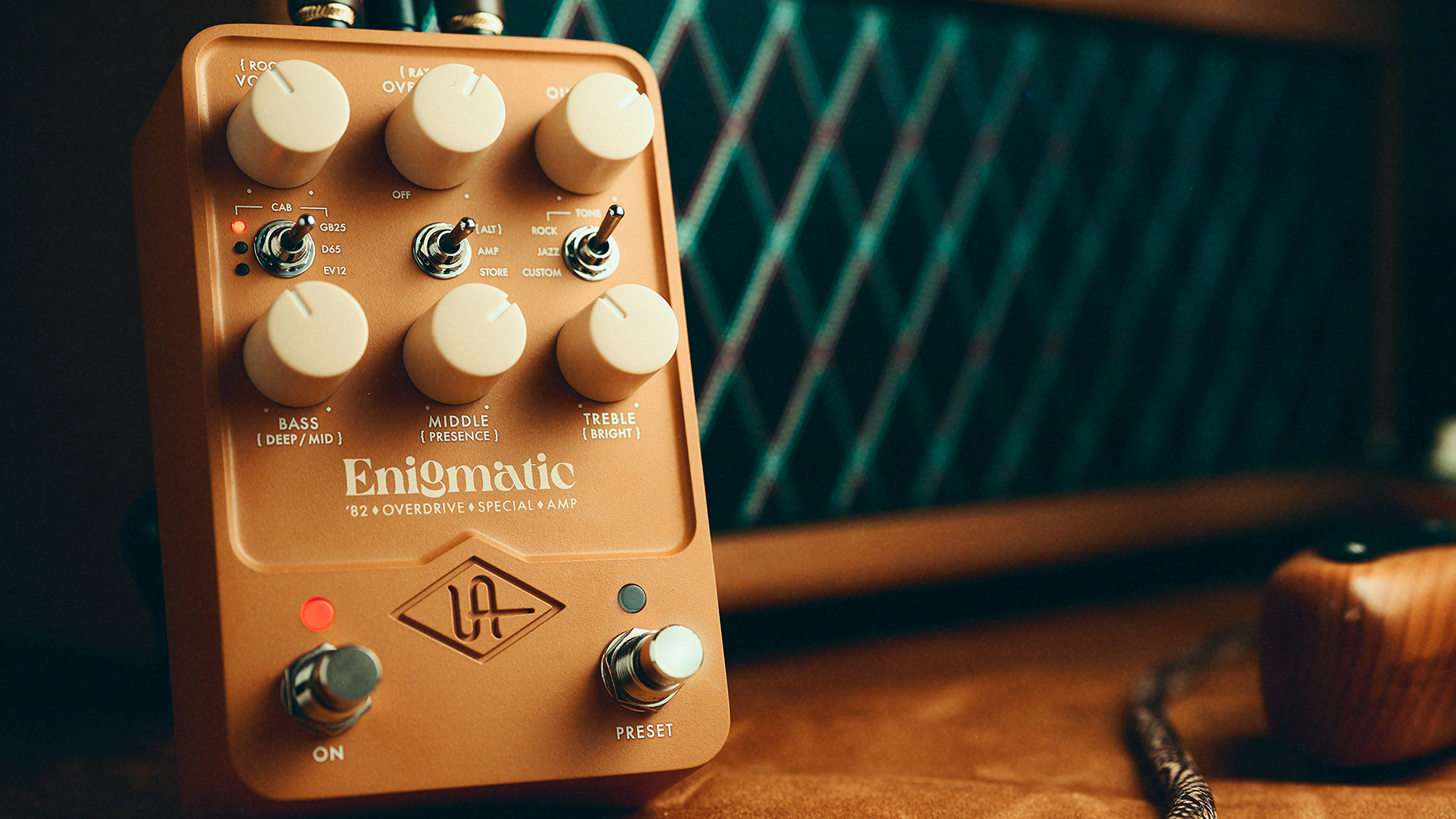GuitarPlayer Verdict
With its impressive design, quality build and light weight, the Fuchs ODH is a gig-worthy tone machine at a very approachable price. The onboard reverb, no-fuss FX loop and international power selector made it a complete package.
Pros
- +
Clever design
- +
Great-sounding D-style amp t
- +
Incredibly portable, and nicely priced
Cons
- -
Might be tricky to achieve low enough output levels for some venues
You can trust Guitar Player.
Amplifier rigs and guitarists’ attitudes toward them have come a long way since solid-state technology made an entry into the marketplace in the mid ’60s.
At the time, iffy reliability and even more disappointing tones from many products — including several by big names like Fender and Vox — confined solid-state technology to second-class citizenship pretty quickly, and the hybrid tube/solid-state creations that some makers introduced years later often suffered by association.
Today, however, countless guitarists have accepted the veracity of fully digital modeling rigs, and many get stellar results using pedalboard-based preamps into solid-state power amps.
So while a tube amp might still be the baseline for expressive, dynamic tone, droves of guitarists have dispensed with their preconceptions about how to achieve that tube-derived tone.
FUCHS’ PERSONAL QUEST
Enter Fuchs Audio Technology’s ODH Hybrid Tube/Solid-State Amp, a new take on the tube/solid-state hybrid amp. With it, acclaimed tube-amp designer and manufacturer Andy Fuchs has addressed many contemporary guitarists’ requirements for versatility and portability. And since Fuchs designed it to suit his own needs, it seems likely primed for broad acceptance.
“It started as a personal quest for my own rig,” Fuchs tells Guitar Player, “to make the smallest, lightest and loudest possible, at a minimal weight. I’m getting on in years and although I still love and appreciate those tubes, I’m now 66 and carrying around an 80 pound combo isn’t fun. I built my first hybrid into an ODS Classic mini combo shell, put in a neo speaker, and gigged it on and off since before the pandemic. It’s taken nearly 10 years to finally get it to market, but that’s because I took it apart dozens of times to tweak it.”
The result is a fully tube-powered, dual-12AX7 preamp stage based closely on Fuchs’ Dumble-inspired ODS model. It feeds a built-in Class D solid-state power amp sourced from Ice Power, capable of producing 300 watts into four ohms or 150 watts into eight ohms. Far more than a straightforward marriage of the two technologies, however, the ODH includes a boatload of features to add versatility and help the two worlds play nice together.
FRONT-LOADED
In a true D-style signal chain, the rhythm channel’s gain, high, mid and bass controls feed into a three-knob overdrive stage — in (OD gain), out (OD level) and tone — when the lead channel is engaged. For reverb, the ODH uses the same side-chain Spin semiconductor reverb circuit Fuchs has used on other amps for several years, with an internal trimmer for dwell. The master governs the overall output, and there are a trio of three-way mini-toggles that offer additional tone settings. The first selects between two EQ modes and a tone-stack-bypass boost. The amp also features accent and depth controls (on mini knobs to further tailor the tone), and the gain boost can be accessed via one of two buttons on the included foot switch. The other two mini toggles offer a choice of two mid-boost settings (it’s off in center position) and two different Brite settings (also off in center position).
In addition the front panel sports the single Input and buffered effects loop’s send and return jacks — Fuchs placed them on the front to keep them away from potential noise induced by the digital power module on the back. Here too are the 1/4-inch TRS foot-switch jack, and the buffered 1/4-inch line out with related three-way switch for amp mute, line mute or all on. Fuchs advises that the ODH can be operated in line-out mode with no speaker attached, but it’s best to switch to amp mute when doing so. Lastly, on the back panel are the on/off switch, AC power cable socket, and two speaker outputs wired in parallel for a total minimum impedance of four ohms.
It turns out that adapting the ODS preamp to the solid-state output stage didn’t require a whole lot of changes, although Fuchs did discover one ingredient essential to maintaining that “tube-amp feel” throughout the chain.
“The only real circuit changes from my prototype amp to the actual production amps is the addition of a real tube limiter,” he says. “I’m using a 6AL5, a fairly common FM radio and TV tube, which is basically a variable diode that I set to clip before the Ice module does, since you don’t really want any digital clipping and you have the potential to blow a speaker with the massive dynamics a tube preamp can produce into a power amp with so much power on tap and no limiter.
“The limiter is placed in the circuit before the master volume, so if you crank up clean or dirt levels, it kicks in. You can get actual nonlinear tube clipping from the preamp with the master down. It acts as a gentler limiter at normal gig levels, keeping you out of trouble, but letting you be as loud as you like. Then the power amp is really just being a delivery system.”

ON TEST
Tested with a Fender Telecaster and a Gibson ES-355 into a 2x12 cab with Celestion G12-65 speakers and a ported back, the ODH immediately impressed me with its ability to retain a tube-like playing feel at a range of volumes, with that authentically thick, rich D-style overdrive kicked in when desired. It’s a very musical, expressive lead tone that works with you the more you learn to work it — almost feeling more like a blown reed instrument or a throaty human voice than a guitar when you really start pushing it. Although this circuit is less known for its edge-of-breakup or crunchy classic-rock tones, they’re in there too if you look for them, mainly by dialing in the very effective In and Out controls in the OD section. And sure, most players will seek an amp like this for portable access to Robben Ford or John Mayer–like tones, but the variety will be a big plus for many.
The amp’s clean tones are also very good, especially for those seeking full-voiced, ultra-clean sonics or other overdrive textures with pedals injected at the front end, which the amp handles well. Although there was no all-tube Fuchs ODS or the like on hand for a direct A/B, I’d say the hybrid approach got pretty darn close to the overall sound and feel I recall from such amps, which are generally designed for a high-headroom output stages anyway.
With that in mind, I found Fuchs’ tube limiter into the solid-state “delivery system” acquitted itself very well. I do feel the amp could use some means of dialing down the volume even further, as once I’d set up the relative gain stages to achieve my favorite lead tones it was still difficult to get the master low enough for small-club output levels without tipping over the edge into silence. **(based on this comment/review, I’ll change the master volume taper on future units).
IN CONCLUSION
Other than the occasional challenge in finding the sweet spot for certain situations though, the Fuchs ODH is an impressive design and a quality build, resulting in a lightweight amp that’s still a real gig-worthy tone machine at a very approachable price. Add in other features like good reverb and a no-fuss FX loop, plus the ability to plug it into any mains power source around the world without monkeying with the transformer or even changing a setting, and the amp earns an Editors’ Pick Award for its achievements.
SPECIFICATIONS
CONTACT fuchsaudiotechnology.com
PRICE $1,299 street
CHANNELS 2
CONTROLS Gain, High, Mid, Low; Overdrive In, Out, Tone; Reverb, Master; Boost mode Accent, Depth; three-way switches for EQ, Mid, Brite, Amp/Line Mute; internal trimmers for Gain, HFOD, Reverb Decay
POWER 300 watts at 4 ohms, 150 watts at 8 ohms
TUBES Two 12AX7 preamp tubes, one 6AL5 dual-diode (as pre-output-stage tube limiter)
EXTRAS Series FX Loop, onboard digital reverb, Line Out, foot-switch jack (two-button FS included), dual speaker outputs
WEIGHT 5 lbs
MADE IN USA
KUDOS A clever design yielding a great-sounding D-style amp that’s incredibly portable, and nicely priced
CONCERNS Might be tricky to achieve low enough output levels for some venues

Dave Hunter is a writer and consulting editor for Guitar Player magazine. His prolific output as author includes Fender 75 Years, The Guitar Amp Handbook, The British Amp Invasion, Ultimate Star Guitars, Guitar Effects Pedals, The Guitar Pickup Handbook, The Fender Telecaster and several other titles. Hunter is a former editor of The Guitar Magazine (UK), and a contributor to Vintage Guitar, Premier Guitar, The Connoisseur and other publications. A contributing essayist to the United States Library of Congress National Recording Preservation Board’s Permanent Archive, he lives in Kittery, ME, with his wife and their two children and fronts the bands A Different Engine and The Stereo Field.
A gigantic $360 off Positive Grid's celebrated BIAS amp sim software may have just put the nail in the coffin of my beloved valve combo
"Let’s take acoustic-electric amplification to its ultimate realization." How to make an acoustic amp shimmer like a vintage Fender, smolder like a Dumble or scream like a Marshall












